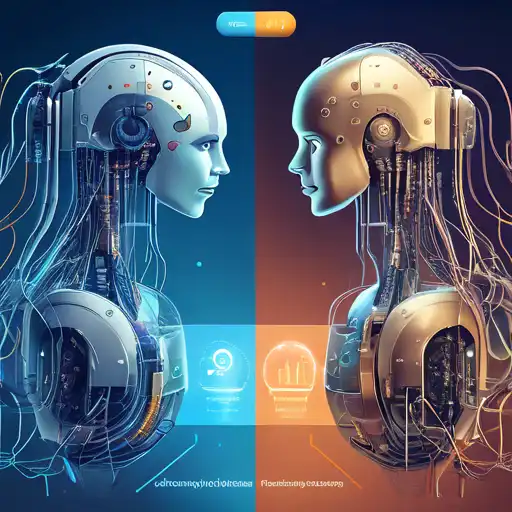Introduction to Machine Learning and Deep Learning
In the rapidly evolving field of artificial intelligence (AI), Machine Learning (ML) and Deep Learning (DL) stand out as two of the most significant and talked-about technologies. While they are often used interchangeably, they are not the same. This article delves into the key differences between ML and DL, helping you understand which technology might be best suited for your needs.
What is Machine Learning?
Machine Learning is a subset of AI that enables systems to learn and improve from experience without being explicitly programmed. It focuses on the development of algorithms that can process data, learn from it, and then make a determination or prediction about something in the world.
What is Deep Learning?
Deep Learning, a subset of Machine Learning, uses neural networks with many layers (hence the 'deep') to analyze various factors of data. It is inspired by the structure and function of the brain, specifically the interconnecting neurons.
Key Differences Between Machine Learning and Deep Learning
Data Dependency
One of the most notable differences is their dependency on data. Machine Learning algorithms can work with smaller datasets, whereas Deep Learning requires large amounts of data to understand and perform tasks accurately.
Hardware Requirements
Deep Learning models are computationally intensive, often requiring powerful GPUs for processing. In contrast, Machine Learning algorithms can run on lower-end systems without the need for as much computational power.
Feature Engineering
In Machine Learning, feature extraction is mostly manual, requiring domain expertise to identify and extract features. Deep Learning automates this process, eliminating the need for manual feature extraction.
Interpretability
Machine Learning models are generally easier to interpret and understand. Deep Learning models, due to their complexity, are often seen as 'black boxes' with little transparency on how decisions are made.
Choosing Between Machine Learning and Deep Learning
Deciding whether to use Machine Learning or Deep Learning depends on several factors, including the size of your dataset, the computational resources available, and the complexity of the problem you're trying to solve. For more insights on making the right choice, explore our guide on Choosing the Right AI Technology for Your Project.
Applications of Machine Learning and Deep Learning
- Machine Learning Applications: Spam detection, recommendation systems, fraud detection.
- Deep Learning Applications: Autonomous vehicles, voice recognition, image recognition.
Conclusion
While Machine Learning and Deep Learning are interconnected, they serve different purposes and are suited to different types of problems. Understanding their key differences is crucial for leveraging the right technology to meet your objectives. Whether you're a beginner or an experienced practitioner, the choice between ML and DL will significantly impact the success of your projects.
For further reading on AI technologies, check out our comprehensive AI Technologies Overview.
